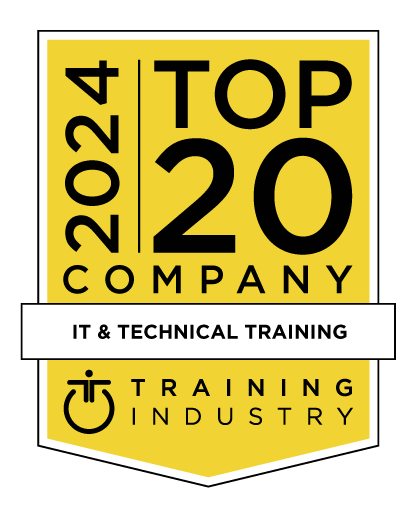title
Please take a moment to fill out this form. We will get back to you as soon as possible.
All fields marked with an asterisk (*) are mandatory.
Implementing and Administering Cisco Solutions (CCNA)
Course Description
Overview
This training teaches you how to install, operate, configure, and verify a basic IPv4 and IPv6 network, configure network components, such as switches, routers, and wireless local area network (LAN) controllers (WLNs), manage network devices, and identify basic security threats.This training also covers the introduction of AI and machine learning (ML) in network operations.
This Learning Path prepares you for the Cisco Certified Network Associate (200-301 CCNA) v1.1 exam. If passed, you earn your CCNA certification.
How You'll Benefit
This training will help you:
- Learn the knowledge and skills to install, configure, and operate a small- to medium-sized network
- Gain a foundation in the essentials of networking, security, and automation
- Prepare for the 200-301 CCNA v1.1 exam
- Earn 30 CE credits toward recertification
What to Expect in the Exam
Cisco Certified Network Associate (200-301 CCNA) v1.1 is a 120-minute exam associated with the CCNA certification.
The exam tests your knowledge and skills related to:
- Network fundamentals
- Network access
- IP connectivity
- IP services
- Security fundamentals
- Automation and programmability
Objectives
- Identify the components of a computer network and describe their basic characteristics
- Understand the model of host-to-host communication
- Describe the features and functions of the Cisco IOS Software
- Describe LANs and the role of switches within LANs
- Describe Ethernet as the network access layer of transmission control protocol and the internet protocol (TCP/IP) and describe the operation of switches
- Install a switch and perform the initial configuration
- Describe the TCP/IP internet layer, IPv4, its addressing scheme, and subnetting
- Describe the TCP/IP transport layer and application layer
- Explore the functions of routing
- Implement basic configuration on a Cisco router
- Explain host-to-host communications across switches and routers
- Identify and resolve common switched network issues and common problems associated with IPv4 addressing
- Describe IPv6 main features, addresses and configure and verify basic IPv6 connectivity
- Describe the operation, benefits, and limitations of static routing
- Describe, implement and verify virtual local area networks (VLANs) and trunks
- Describe the application and configuration of inter-VLAN routing
- Explain the basics of dynamic routing protocols and describe components and terms of open shortest path first (OSPF)
- Explain how spanning tree protocol (STP) and rapid spanning tree protocol (RSTP) work
- Configure link aggregation using EtherChannel
- Describe the purpose of Layer 3 redundancy protocols
- Describe basic wide-area network (WAN) and virtual private network (VPN) concepts
- Describe the operation of access control lists (ACLs) and their applications in the network
- Configure internet access using dynamic host configuration protocol (DHCP) clients and explain and configure network address translation (NAT) on Cisco routers
- Describe the basic quality of service (QoS) concepts
- Describe the concepts of wireless networks, which types of wireless networks can be built and how to use WLC
- Describe network and device architectures and introduce virtualization
- Explain software-defined networks
- Configure basic Cisco IOS system monitoring tools
- Describe the management of Cisco devices
- Describe the current security threat landscape
- Describe threat defense technologies
- Implement a basic security configuration of the device management plane
- Implement basic steps to harden network devices
- Discuss the need of network programmability in Enterprise networks, common programmability protocols, and configuration management tools
- Describe AI and ML in network operations
Audience
- Entry-level Network Engineers
- Entry-level Network Administrators
- Entry-level Network Support Technicians
- Entry-level Help Desk Technicians
Prerequisites
-
The knowledge and skills you are expected to have before attending this training are:
- Basic computer literacy
- Basic PC operating system navigation skills
- Basic internet usage skills
- Basic IP address knowledge
Topics
- Exploring the Functions of Networking
- Introducing the Host-To-Host Communications Model
- Operating Cisco IOS Software
- Introducing LANs
- Exploring the TCP/IP Link Layer
- Starting a Switch
- Introducing the TCP/IP Internet Layer, IPv4 Addressing, and Subnets
- Explaining the TCP/IP Transport Layer and Application Layer
- Exploring the Functions of Routing
- Configuring a Cisco Router
- Exploring the Packet Delivery Process
- Troubleshooting a Simple Network
- Introducing Basic IPv6
- Configuring Static Routing
- Implementing VLANs and Trunks
- Routing Between VLANs
- Introducing OSPF
- Building Redundant Switched Topologies
- Improving Redundant Switched Topologies with EtherChannel
- Explaining the Basics of ACL
- Enabling Internet Connectivity
- Introducing AI and ML in Network Operations
- Introducing System Monitoring
- Managing Cisco Devices
- Securing Administrative Access
- Implementing Device Hardening
- Exploring Layer 3 Redundancy
- Introducing WAN Technologies
- Introducing QoS
- Explaining Wireless Fundamentals
- Introducing Architectures and Virtualization
- Explaining Software-Defined Networking
- Introducing Network Programmability
- Examining the Security Threat Landscape
- Implementing Threat Defense Technologies
- Get Started with Cisco CLI
- Observe How a Switch Operates
- Perform Basic Switch Configuration
- Inspect TCP/IP Applications
- Configure an Interface on a Cisco Router
- Configure and Verify Layer 2 Discovery Protocols
- Configure Default Gateway
- Explore Packet Forwarding
- Troubleshoot Switch Media and Port Issues
- Troubleshoot Port Duplex Issues
- Configure Basic IPv6 Connectivity
- Configure and Verify IPv4 Static Routes
- Configure IPv6 Static Routes
- Configure VLANs and Trunks
- Configure Inter-VLAN Routing
- Configure and Verify Single-Area OSPF
- Configure and Verify EtherChannel
- Configure and Verify IPv4 ACLs
- Configure a Provider-Assigned IPv4 Address
- Configure Static NAT
- Configure Dynamic NAT and PAT
- Configure and Verify NTP
- Create the Cisco IOS Image Backup
- Upgrade Cisco IOS Image
- Secure Console and Remote Access
- Enable and Limit Remote Access Connectivity
- Configure and Verify Port Security
- Log in to and Monitor the WLC
- Configure an Open Wireless Network
- Define a RADIUS Server and Enable SNMP and Syslog
- Configure a WLAN to Use WPA2 PSK
Related Courses
-
Implementing Cisco Enterprise Advanced Routing and Services (ENARSI)
CSC-ENARSI- Duration: 5 Days
- Delivery Format: Classroom Training, Online Training
- Price: 4,295.00 USD
-
Implementing Cisco Catalyst 9000 Series Switches (ENC9K)
CSC-ENC9K- Duration: 3 Days
- Delivery Format: Classroom Training, Online Training
- Price: 2,995.00 USD
Self-Paced Training Info
Learn at your own pace with anytime, anywhere training
- Same in-demand topics as instructor-led public and private classes.
- Standalone learning or supplemental reinforcement.
- e-Learning content varies by course and technology.
- View the Self-Paced version of this outline and what is included in the SPVC course.
- Learn more about e-Learning
Course Added To Shopping Cart
bla
bla
bla
bla
bla
bla
Self-Paced Training Terms & Conditions
Exam Terms & Conditions
Sorry, there are no classes that meet your criteria.
Please contact us to schedule a class.

STOP! Before You Leave
Save 0% on this course!
Take advantage of our online-only offer & save 0% on any course !
Promo Code skip0 will be applied to your registration
Purchase Information
title
Please take a moment to fill out this form. We will get back to you as soon as possible.
All fields marked with an asterisk (*) are mandatory.










